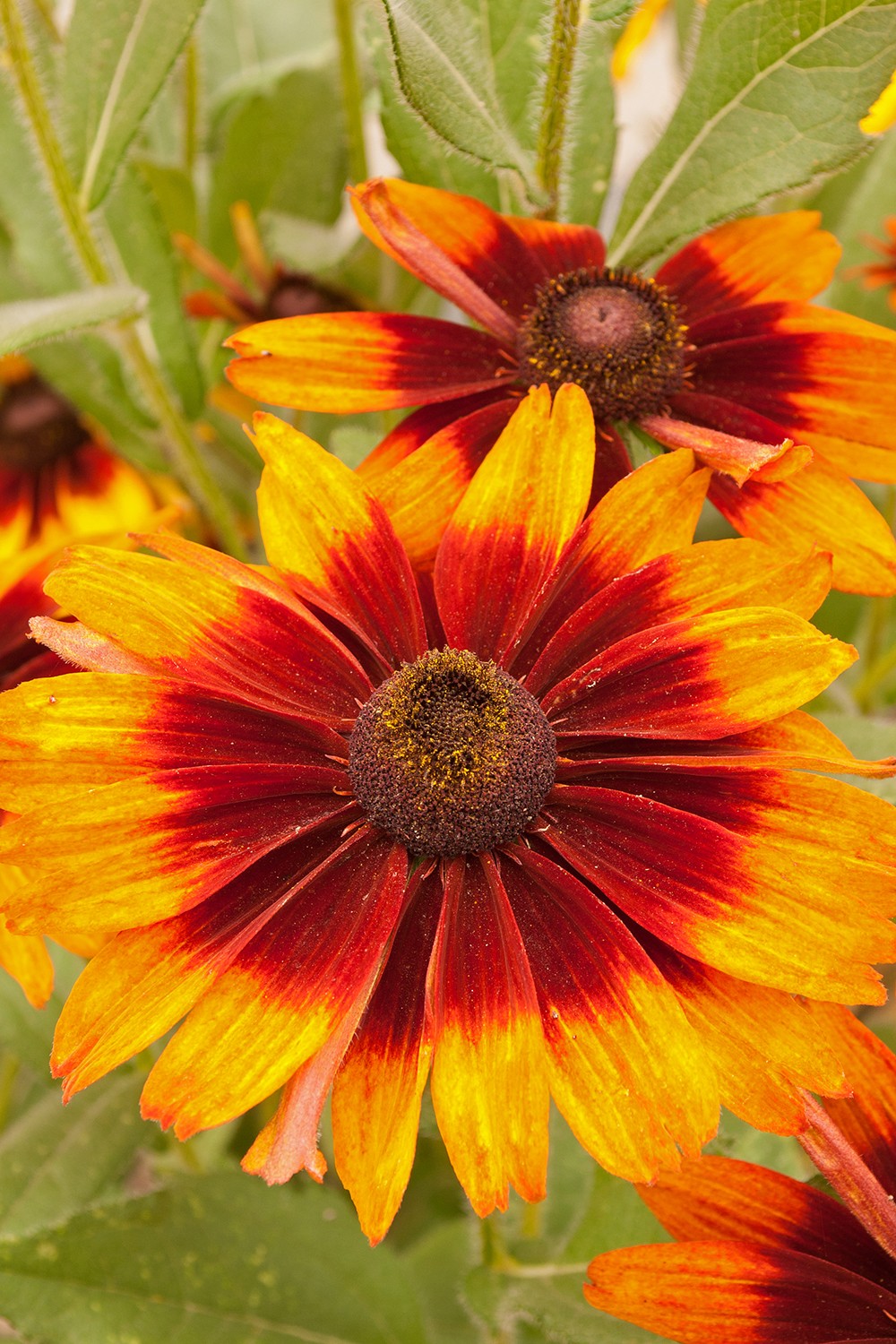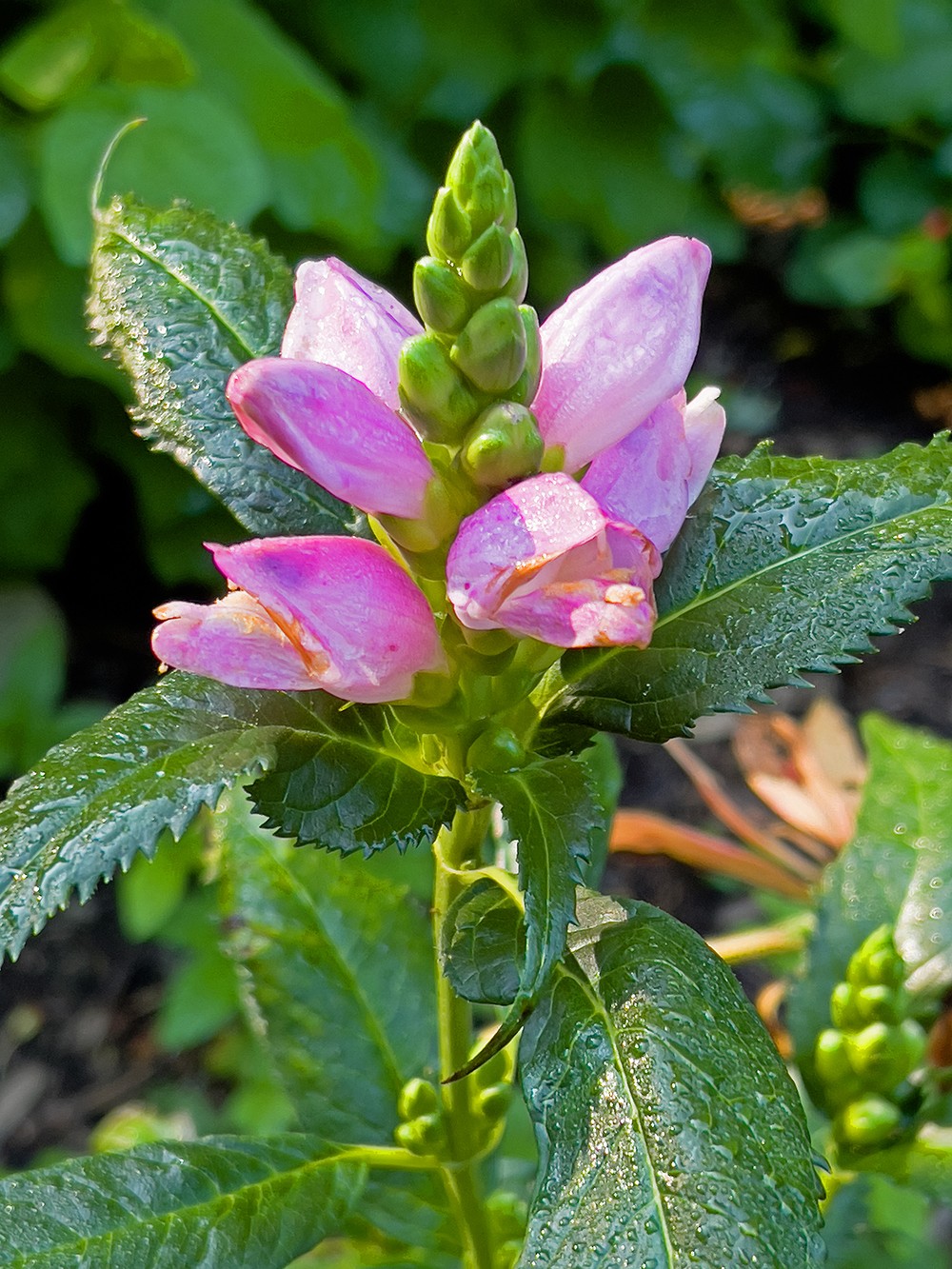Sometimes a weird name is the best way to describe an unusual flower. Take turtlehead (Chelone sp.), for example. Its hooded blossoms do — with some imagination on your part — look like a turtle poking its head out from a shell.
Aside from this plant’s odd name and strange-looking blooms, turtlehead is a rather pretty plant. And it’s pretty tough, too. An herbaceous perennial, it is native to the Southeast and has typical wildflower durability baked into its genes, including being deer resistant.
Turtlehead performs best in sunny to semi-shady gardens, but unlike many plants destined for your personal Ponderosa, it will thrive in soggy soil, making it a great addition to a rain garden or low spot in the landscape that turns to muck when the rains come. And it is an obvious option as a marginal plant in a water garden.
Turtlehead does provide visual satisfaction, but you have to be patient because it waits until the high summer to begin showing off its peculiar blossoms. By then, flower towers arise on sturdy, 2- to 3-foot stems with the lower clusters opening first, and then the bloom show steadily parades upward. This pleasant progression can last over a month.
If the flowers are left to go to seed, your turtlehead patch will continue to grow, just as long as the soil is kept moist to encourage new sprouts. In addition, a turtlehead will slowly expand its clump by way of underground rhizomes. And if you want extra turtleheads for other parts of your landscape or to give away to friends, it can also be propagated by divisions taken in the early spring, just as new growth begins to appear.
There are three turtleheads typically available for sale. Pink turtlehead (Chelone lyonii) is the most common — meaning easiest to find — and in particular, the cultivar ‘Hot Lips,’ which is quite a cutie with light rose flowers on red stems hovering over rich green foliage. Prefer white blooms? Chelone glabra will deliver with its pale, snapdragon-like blossoms. There is even a red turtlehead (Chelone obliqua), but the ones I have seen had flowers that were more a deep pink rather than a flashy red.
Since now into September is turtlehead’s prime blooming time, if available, it won’t be hard to spot at local nurseries, but if your search comes up short, this strange beauty is an easy find online.

The late-season beauty of a rudbeckia known as ‘Autumn Colors.’
Challenge the soft hues of turtlehead with sassy oranges, screaming yellows, and occasional reds from other late-summer bloomers such as helianthus, rudbeckia, heliopsis, and helenium. Like turtlehead, these flashy four are native to North America and herbaceous perennials, meaning they can also become durable fixtures in your flower garden for many growing seasons.
Late summer into the fall is a good time to plant such perennials. To get yours off to a good start, heavily amend the planting holes with compost or a commercial soil conditioner. Then, add mulch and water the new pretties for at least a month after planting if regular rains don’t oblige.
To Do in the Garden
August
- Although the temperatures are scorching, believe it or not, now is the time to crank up the cool-season veggie patch. Cabbage, Brussels sprouts, cauliflower, carrots, Swiss chard, collards, kale, lettuce, mustard greens, onions, radishes, spinach, and turnips can all be started this month.
- If you have houseplants vacationing outdoors this summer, check them carefully this month for any insect activity and dispatch accordingly to prevent any bad bugs or, in particular, their eggs from being brought inside this fall.
- It’s a good time to plant bulbs — no, not daffodils, hyacinths, tulips, and the like, but rather unusual fall-flowering beauties such as sternbergia, colchicum, and autumn-blooming crocus.
- Adding fresh water to the birdbath weekly is beneficial to birds, of course, but this chore will also help make your outside activities a little more pleasant because a neglected birdbath is a sure-fire skeeter breeder.
- Local Celebrity Pets
- Living Walls
- Building the Dream
- House It Going in the Real Estate Market? A Realtor Q&A
- Susu Hauser: The Woman Behind the Camera
- Erica Chats: Explore Family Fun
- Small Business Spotlight: AR Workshop Cary
- Nonprofit Spotlight: AnimalKind
- Restaurant Profile: TapStation
- Liquid Assets: The Ruby Leaf
- Liquid Assets: Kölsch from White Street Brewing Company
- On Trend: The Wonderful World of Wallpaper
- Garden Adventurer: Strange Beauty: Turtleheads
- Things to Do: August 2022







